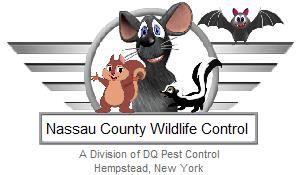How To Get Rid Of Opossums Nassau County, New York
Opossum Repellents
There are a countless number of opossum repellents on the market to pick from, including coyote urine, fox urine, bobcat urine, ultrasonic sound emitting gadgets, light repellents, wildlife granular repellents, motion activated wildlife water repellent devices, and liquid spray repellents. There is no scientific research demonstrating that any of these products actually work. The truth is, none of these quick fix wildlife control repellents effectively gets rid of opossums.
Opossum Trapping
Humane opossum trapping has been shown to be the only effective way to get rid of an opossum and it is the method used by wildlife removal experts at Nassau County Wildlife Control. Knowing what type of humane opossum trap to use and what bait to use is largely contingent upon what time of the year it is. The possum trapping techniques that our Nassau County opossum removal wildlife trappers use, is also dependent upon the situation and where the opossums are entering your Nassau County home, or business. Opossum removal prices are dependent upon what would be entailed in the Long Island opossum removal process. Our Nassau County Wildlife Control animal trapping experts know what humane opossum trap and what opossum bait to use in every situation.
Opossum Exclusion
Upon the completion of the humane opossum removal, we will send out a licensed Nassau County contractor to give you a free estimate on any wildlife repairs that need to be done to your Nassau County, Long Island residence, or business to keep opossums out. Our licensed New York State nuisance wildlife control operators will suggest any modifications that can be made to your home, or business to avert future encounters with opossums or unwanted wildlife.






